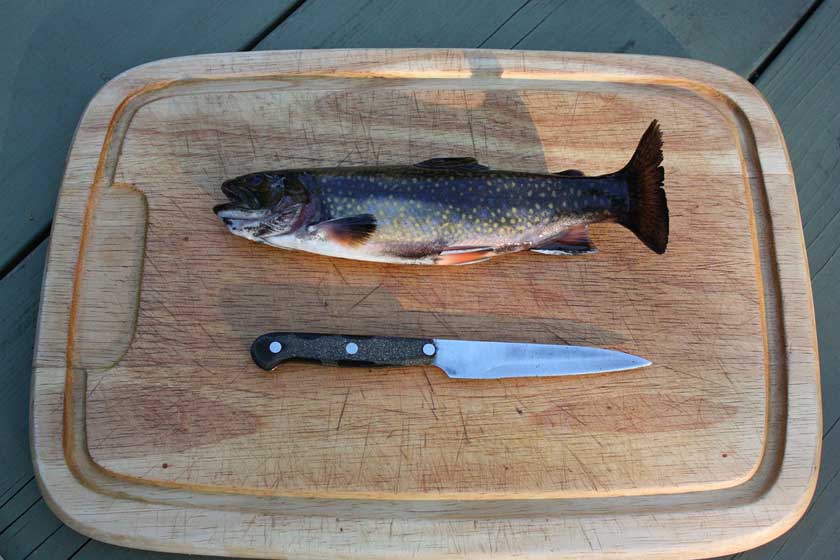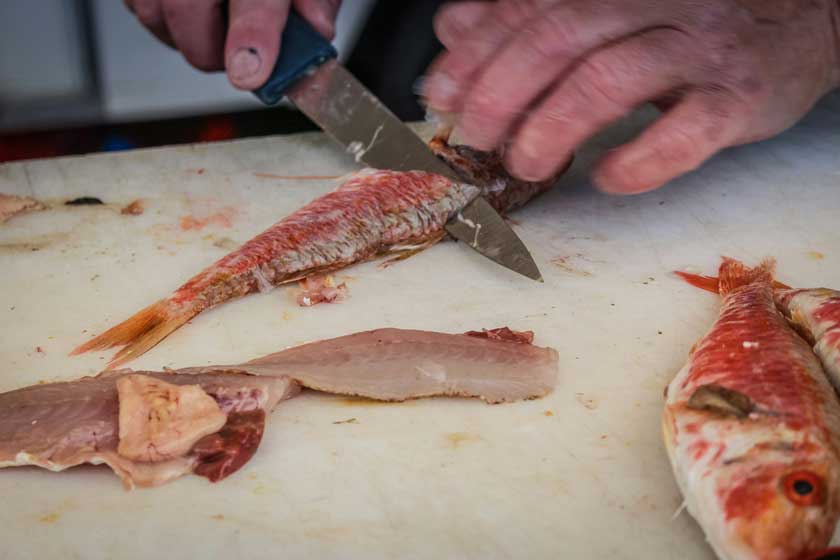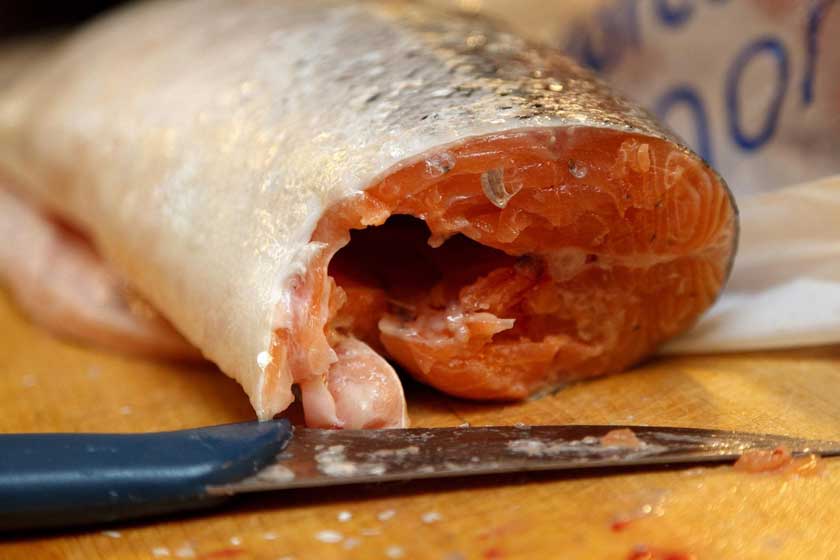Filleting a fish is one of those kitchen skills that merges precision, patience and a certain quiet respect for the ingredients. Done well, it’s a fluid sequence of movements - blade gliding along bone, skin parting cleanly from flesh and the fish yielding to your touch.
It’s not just a technique but a ritual, transforming something whole and ocean-born into delicate, boneless cuts ready for the pan or plate.
Before the knife even touches the fish, preparation matters. The workspace should be clean, the cutting board steady and the filleting knife razor-sharp. A flexible, thin blade is ideal - it allows you to feel your way along the bones with control.

Rinse the fish under cold water and pat it dry; moisture dulls the edge and makes the flesh slippery. Lay it on its side with the head facing your non-dominant hand, the backbone aligned horizontally before you.
Start with the head. Just behind the gills, angle your knife diagonally toward the head and make a smooth cut down to the bone. You’ll hear a faint scrape as steel meets cartilage. Without severing the fish completely, turn your blade flat and draw it down the length of the body, hugging the backbone with long, even strokes.
The sound is distinct - a soft tearing and sliding, like silk being cut. Lift the fillet gently as you go, easing it away from the ribcage, using the knife to separate where the flesh clings.

Once you reach the tail, cut cleanly through and lift away your first fillet. Flip the fish over and repeat the process on the other side. This second cut feels more intuitive - the muscle memory settles in, your movements smoother, the fish yielding more willingly. You’re not hacking; you’re coaxing, following natural lines that the fish itself provides.
After both fillets are free, the finishing touches begin. Run your fingers lightly along the centre to find any stray pin bones. These can be removed with tweezers or pliers - grip firmly and pull in the direction they grow to avoid tearing the flesh.
To skin the fillet, place it skin-side down, hold the tail end firmly and slide your knife between the skin and meat at a shallow angle. A gentle sawing motion, combined with light tension on the skin, will separate them cleanly. The reward is a supple, glistening fillet that smells faintly of salt and sea.

Filleting is as much about respect as it is about technique. Each stroke should feel deliberate, not rushed - a conversation between hand and fish. There’s beauty in its precision, satisfaction in seeing clean, translucent flesh where once there was scale and bone. Whether for a simple pan fry or an elegant sashimi platter, a well-filleted fish is a small triumph of craftsmanship - quiet, graceful and rooted in tradition.






